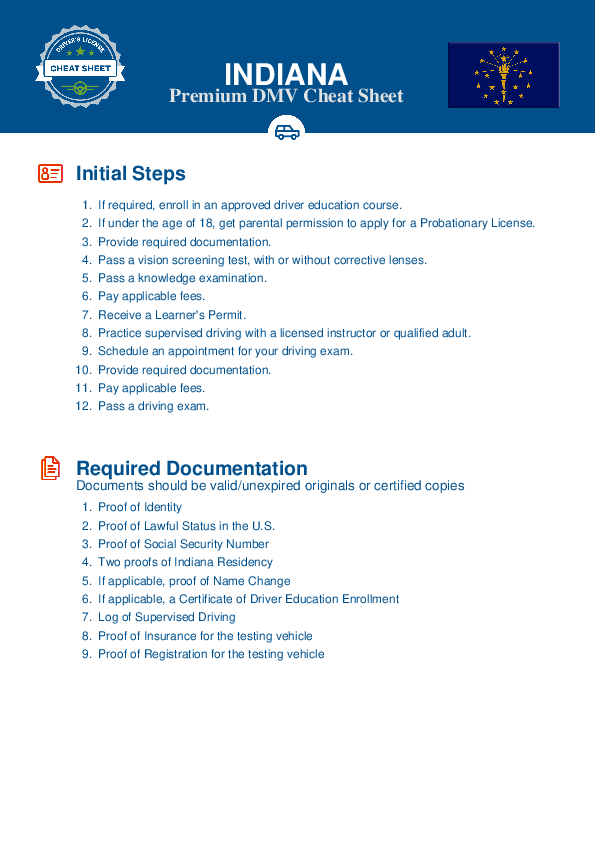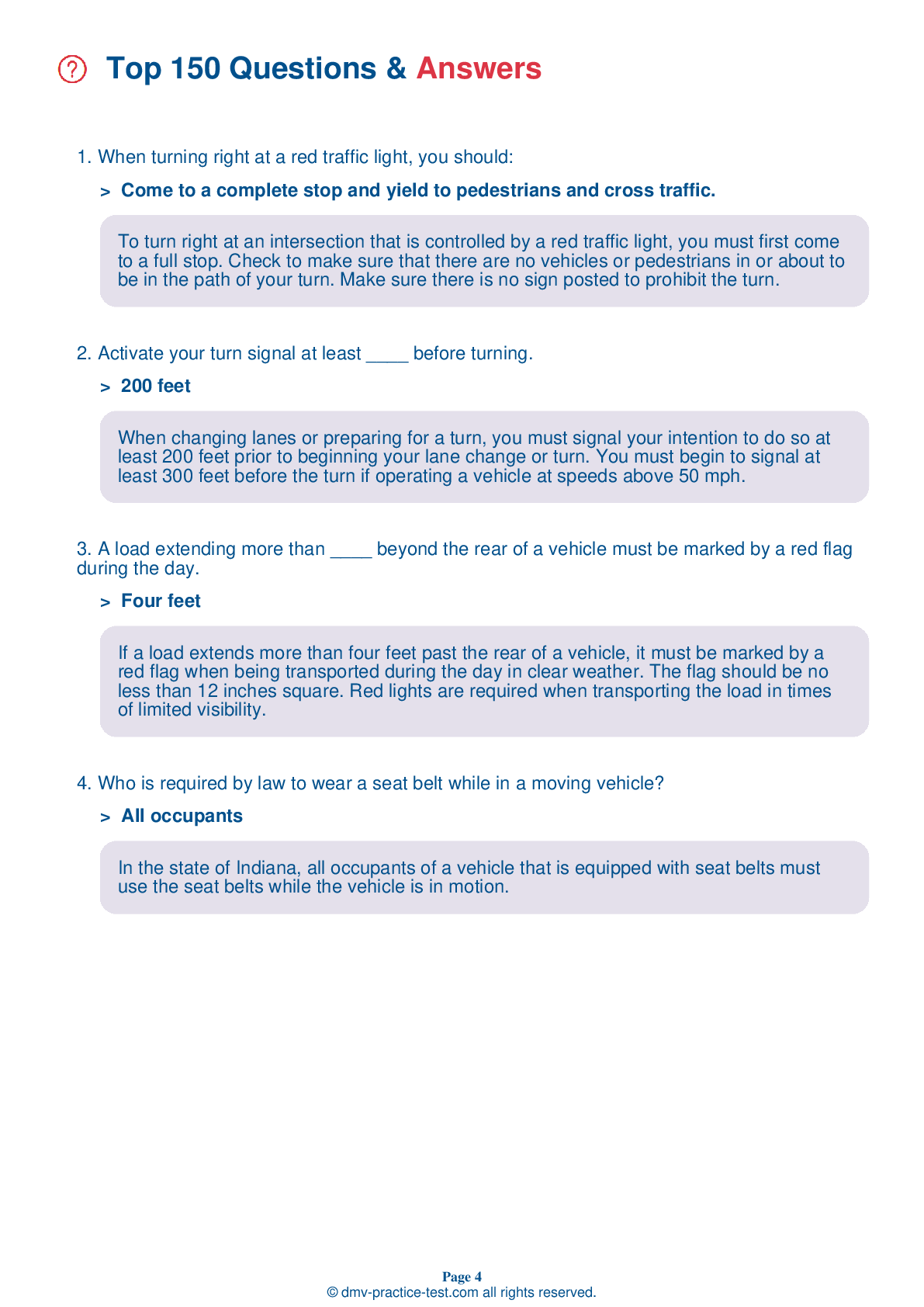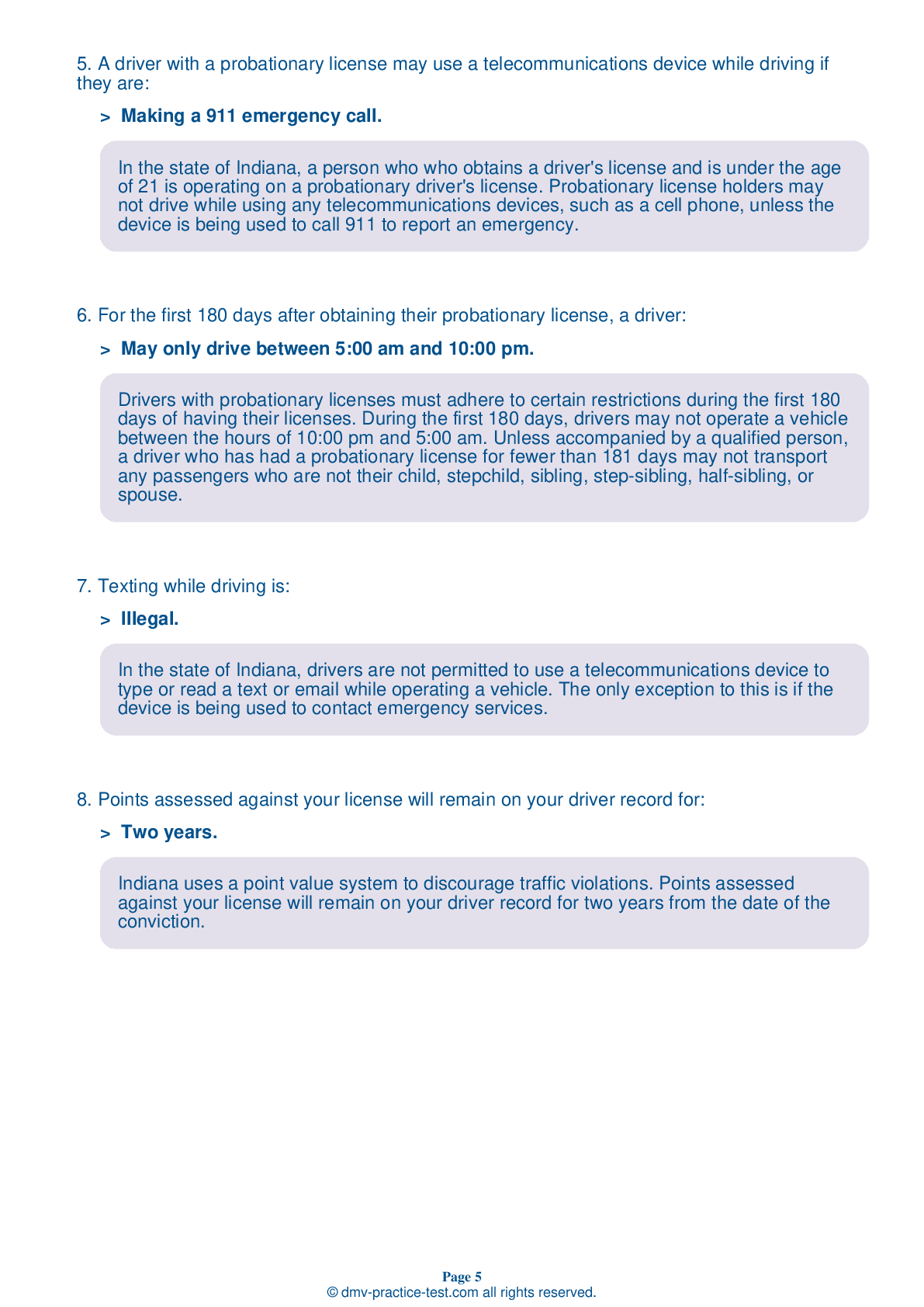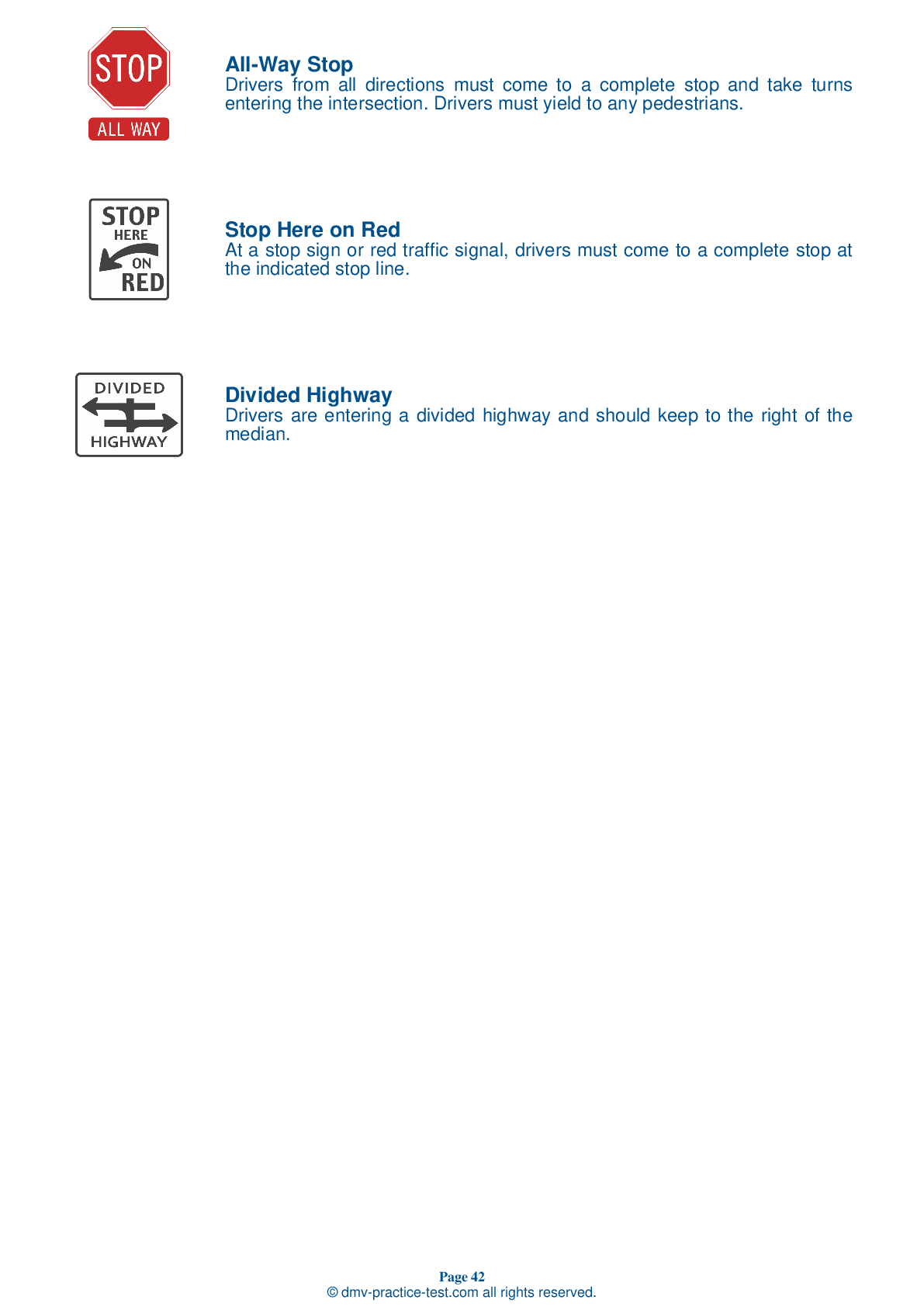FREE Indiana DMV Practice Test #12 Page 5 of 5
This set of Indiana DMV practise tests has been updated for January 2025. It includes questions based on the Indiana Driver Handbook's most significant traffic signals and laws for 2025. Use actual questions that are very similar (often identical!) to the DMV driving permit test and driver's licence exam to study for the DMV driving permit test and driver's licence exam.
On the practise exam, each question gets a tip and explanation to help you remember the concepts. The written component of the official Indiana DMV test will include questions about traffic rules, traffic signs, and driving statutes, as well as information from the Driver Handbook.
To obtain a passing grade, you must correctly answer 44 of the 50 questions. Take our DMV practise exam to help you prepare for your Indiana instruction permit or driver's licence.
The DMV exam is available in several languages.
Using any kind of testing assistance will result in an automatic fail, and the DMV may take additional action against your driver's licence, so stay away from it.
39 . When approaching a steady green traffic light, drivers should:
When approaching an intersection with a steady green traffic light, yield to pedestrians in the crosswalk and vehicles still in the intersection. You may continue driving, but should approach the intersection at a speed that will allow you to slow down and stop if the light changes before you get there.
40 . This road sign means:
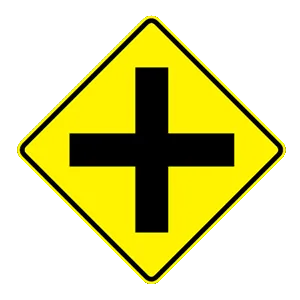
This signs warns that a four-way intersection is ahead.
41 . An inattentive driver is a driver who:
Do not become distracted by looking at passengers, attempting to find something in your vehicle, looking at reading material, sightseeing, or daydreaming while driving. Continue scanning the road, checking your mirrors, and looking at the instrument panel at regular intervals. Developing these safe habits will keep you attentive as a driver.
43 . Which of the following best ensures your safety and the safety of those around you when you are backing your vehicle?
Backing requires extra caution because it is difficult for drivers to see behind their vehicles. Before entering a vehicle to back up, walk to the back of the vehicle to check for children and small objects.
44 . If you stop at a railroad crossing with more than one track:
If you are stopped at a railroad crossing with more than one track, do not start moving as soon as a train passes. Wait until you have a clear view down all tracks before you start across. Even where there is only one track, do not start across immediately after a train passes; check again for another train that may be approaching.
45 . This road sign means:

This sign means that a traffic signal is ahead. You should slow down and be prepared to stop.
46 . What is the meaning of this sign?
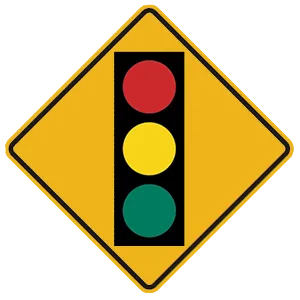
This sign indicates that there is a traffic signal at the intersection ahead.
47 . This sign means:
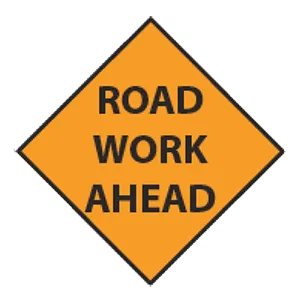
Construction and maintenance signs are orange-colored and are used to notify drivers of unusual or potentially dangerous conditions in or near work areas. This sign warns drivers that they are approaching a construction zone and that they should prepare to lower their speed and drive with extraordinary caution.
48 . When faced with an oncoming car to the left and a bicyclist to the right, you should:
When there is more than one potential hazard on the road, you should ensure that you only have to deal with one of them at a time. For example, when there is a bicyclist on the right that you want to pass and an oncoming car to the left, you should not try to squeeze between both at the same time. Instead, let the oncoming car pass, and then pass the bicyclist.
49 . If your wheels drop off the pavement and onto the shoulder of the road, you should:
If your wheels drop off the pavement and onto a low shoulder, you should reduce your speed without braking and very carefully turn back onto the pavement. Be aware of any nearby traffic when re-entering the road.
50 . You may honk your horn when you:
One situation where it is appropriate to use your horn is if you lose control of your vehicle. In this case, sound your horn to alert other drivers.
Need Car Insurance? No problem!
Compare the best rates in Indiana and find a personalized policy that meets your needs.
1. Are You Currently insured ?
2. Married ?
3. Do you own your Home?
4. Do you have more than 1 car ?
5. Have you or a Family Member Honorably Served in U.S. Military ?
6. Your Name
7. Age
8. Zip code
IMPORTANT REMINDER:Auto Insurance is Mandatory to drive in Indiana. Get covered before you hit the road to avoid any fines.
Ranked by best match

